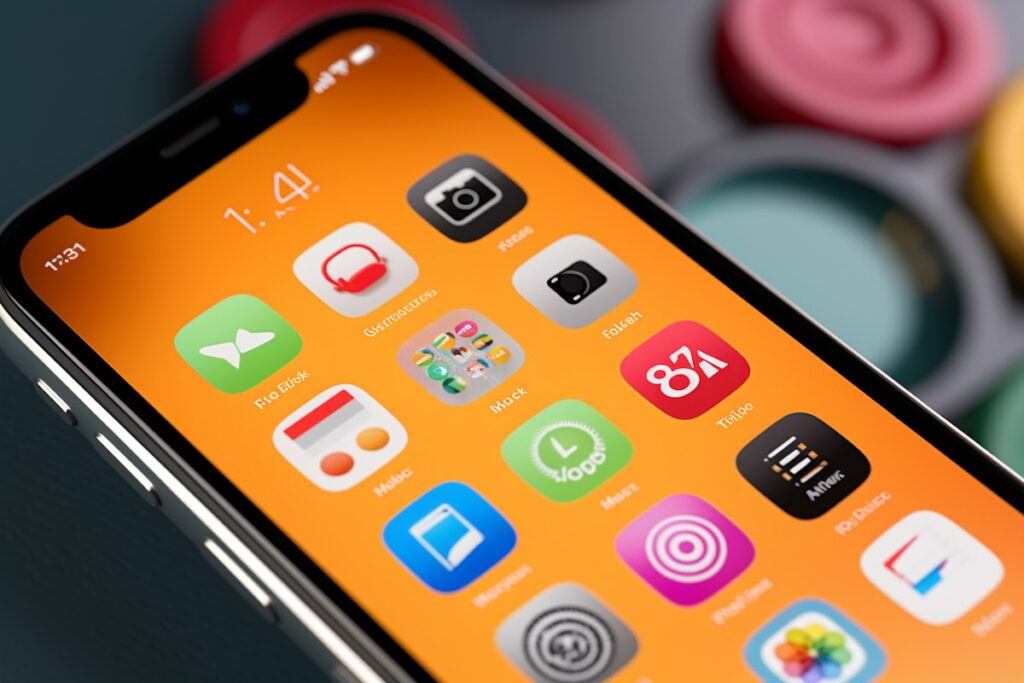If you’re trying to learn Spanish without pulling out your wallet, I’ve got what you need. There are plenty of quality resources that make this totally possible. I’ve checked out dozens of apps, websites, podcasts, games, and more, so this guide is built from all the good stuff I keep coming back to. Here’s how you can build a complete and personalized Spanish learning routine entirely for free.
At the end of this article, you will have a gift.

100% Free Spanish Learning: A Quick Overview
A solid Spanish routine is much more than just flipping through vocab lists. It’s about mixing reading, listening, practice, and fun to build a language habit that sticks. Thanks to loads of free platforms, you can get real listening experience, grammar explanations, interactive lessons, and even native speaker conversations at any level. The trick is knowing where to look and how to combine these tools. Whether you’re working toward travel, connecting with friends and family, or just expanding your skills, check out this run-through of free resources I trust.
Best Free Apps and Tools for Structured Spanish Learning
Consistent daily practice helps a lot, especially at the start. There are several apps and websites I like that keep my students motivated with lessons and reminders. Here are the best ones that are truly free and worth your time:
- Duolingo: Super easy for total beginners, with bite-sized lessons and regular reminders to practice. You get tons of language basics for free.
- Anki: A free flashcard app (for computer or Android) where you can download premade Spanish decks or create your own. Spaced repetition here really helps the vocab stick.
- Memrise (Usercreated Courses): The official Memrise courses are now behind a paywall, but the usermade courses are still totally free. There’s a huge collection, especially for vocabulary and phrases.
- Clozemaster: Great for practicing words in context. The main features are free, and it’s useful for beyondthebasics vocab and grammar, perfect for reviewing.
- Readlang: Install the browser extension and turn any webpage into a Spanish lesson with instant vocab lookups and spaced review.
- Language Transfer: Offers a full Spanish audio course, completely free. It’s a different method of learning a language. It is definitely worth a try.
- Aprender Español: Here you have completely free grammar, from beginner to advanced level, vocabulary, texts and audios. I use this site a lot with my students. It is simple and functional.
Other options, like SpanishDict and Conjuguemos, provide extra exercises and grammar explanations, and are good for quick reference or practice when you have a few spare minutes. These are free, reliable, and easy to jump into whenever you want to brush up or check something.
Free Listening and Comprehension Practice
During your learning, it is very important to receive audio input. For that reason, I also recommend the following resources to my students:
- Dreaming Spanish (YouTube): Tons of comprehensible input videos, most of which are available for free. Content is grouped into levels, so you can follow along from the beginner basics to much faster (and funnier) intermediate chats.
- Easy Spanish (YouTube): On-the-street interviews, casual vocabulary explanations, and plenty of slang, all with Spanish and English subtitles. This helps tune your ear to different accents and speech speeds.
- Duolingo Spanish Podcast: True stories from across Latin America and Spain, told at a gentle pace with English explanations mixed in. The best: the website lets you read transcripts too.
- Buenos Días Spanish Podcast: Aimed at beginners, it covers grammar and vocabulary in small, manageable episodes.
- Radio Ambulante (Podcast): For intermediate and advanced learners, it’s like NPR in Spanish, with real news, stories, and culture in Latin American Spanish, plus full transcripts.
As you build confidence, you can try more Spanish language movies or TV shows with subtitles. Platforms like Pluto TV and Filmoteca Española often have old films and series for free, letting you soak up language in a fun, lowpressure way and get a feel for various dialects.
Practice Speaking, Writing, and Interactive Activities
Nothing will give a boost to your Spanish like actually using it. Even without a paid tutor, you can find free ways to chat, write, and get feedback:
- HelloTalk: A popular free language exchange app. Text, voice note, and chat with native Spanish speakers worldwide; just be sure to give English help in return. Totally free at the basic level.
- Tandem (Free Version): Very similar to HelloTalk, with group chat options and an easy interface for finding native Spanish speakers who want to trade language practice.
- Lingobongo: You can find people who want to exchange their language for Spanish. Very simple and effective.
- Conversation Exchange: Search for free language partners who want to chat via email, text, voice, or in person. Oldschool but reliable.
- Reddit: r/Spanish & r/Language_Exchange: Find conversation partners, ask grammar questions, or try community writing prompts. Tons of free advice and support. I love it.
- Discord Language Servers: There are friendly Spanish learning servers where you can join voice chats, play games, and participate in writing challenges. It’s a fun, lowpressure way to practice for free.
Writing in Spanish can also include journaling, sending short journal entries to partners for feedback, or posting on forums. With LanguageTool you can check basic grammar for free, supporting you as you build confidence. It’s invaluable for improving your writing in Spanish.
Free Reading Material and Everyday Spanish Input
Reading realworld Spanish is one of the best ways to see new vocabulary and grammar in context. Here’s what I use for authentic input, even at an early stage:
- News in Slow Spanish (Free Sample Lessons): The full service is paid, but a whole bunch of slow and clear news stories are free online. Great for lower-intermediate learners.
- CNN Español & BBC Mundo: Free access to top news stories in Spanish. Paired with a browser extension like Readlang, you can translate tricky words instantly.
- Project Gutenberg: Classic Spanish books in the public domain are easy to download for free. Great for advanced learners.
- Biblioteca Virtual Miguel de Cervantes: Massive, free digital library with everything from kids’ stories to short fiction and academic works.
Magazines like Muy Interesante or online comic strips (like Condorito) are also freely available on many Spanish sites. These add some variety to your reading practice and help you pick up on idiomatic expressions in everyday settings.
Common Challenges (and How Free Resources Help)
Learning Spanish for free is totally doable, but there are a few common hurdles. Here are some tips from my own experience, plus how these free platforms can smooth things out:
- Vocabulary Overload: Apps with spaced repetition (like Anki and Clozemaster) keep everything manageable, even with huge word lists.
- Understanding Fast Speech: Comprehensible input channels (like Dreaming Spanish) are designed to bridge that gap. Stick with it, and repeating older episodes works wonders.
- Low Motivation or Burnout: Mixing it up with podcasts, video stories, and conversation chats on HelloTalk keeps things refreshing.
- No One to Practice With: Both Reddit and Tandem offer free options to make real connections, even for shy learners.
Finding Balance in Your Routine
Using a blend of these resources beats relying on just one app or textbook. Rotating your focus, maybe vocab one day, videos the next, and then a chat with a language partner, keeps it fun and effective. If you ever feel stuck or bored, just switch things up by adding a different activity. This balance makes your progress steady and less stressful.

Tips for Making the Most of Free Spanish Resources
- Set Tiny, Daily Goals: Aim for 10-15 minutes a day to start—enough to build a streak but not feel overwhelmed.
- Choose One or Two Core Apps: Too many tools can get confusing, so pick your favorites for routine practice.
- Watch Kids’ Shows or Cartoons in Spanish: Offered for free on YouTube, they usually have clear speech and everyday vocabulary.
- Track Progress in a Notebook or App: Jotting down new words or grammar makes for easy review later.
- Don’t Be Afraid of Mistakes: Nobody starts out fluent. Language exchanges and community forums are full of patient people happy to help out.
- Set a Weekly Goal: In addition to daily targets, try challenging yourself to complete a certain number of lessons or sample a new podcast each week. This helps keep you moving forward and exploring new content.
- Exchange with a person who knows about the language: Sometimes there will be things you will not understand and you will want someone to explain the details carefully. So you can look for an exchange with a teacher or someone who knows a lot about the language.
- Use artificial intelligence chats (like ChatGPT): If you don’t know how to start, you can insert the following prompt: “You are an expert in teaching Spanish. I want to learn Spanish and I need your help. How can you help me improve?” From there the possibilities are endless.
FAQ About Learning Spanish for Free
Is it possible to reach fluency using only free resources?
Yes, it’s totally possible. It depends on how consistent you are and how well you use the variety of tools and opportunities online. Paid resources are sometimes more convenient, but free options cover all the important basics.
What are the best free resources for beginners?
Duolingo, Language Transfer, Easy Spanish, and the childrens book libraries offer a perfect mix for getting off the ground. Try adding simple cartoons, like Jorge el Curioso, for extra listening practice.
How do I find native speakers to practice with for free?
Apps like HelloTalk, Tandem, and language forums put you directly in touch with folks anywhere in the world—no cost except your time. Don’t forget sites like Speaky or MyLanguageExchange for even more connections.
Should I focus on grammar or vocabulary first?
A little of both makes sense. Start with the main grammar points in context (like in Language Transfer or Duolingo), and add practical, high-frequency vocab from flashcard decks or real conversations.
Would you like to start receiving ideas and resources directly to your inbox now? Then subscribe to The Spanish Hub, the newsletter where I share the best ideas and tools for learning Spanish.
When you subscribe, you will immediately receive a free gift: The Spanish Kit.
Wrapping Up
Learning Spanish for free is possible, but you should know that you will need to work hard. It’s up to you to set your routine and keep up with it. The good thing is that you have a multitude of resources and companions along the way. ¡Si quieres, puedes! (If you want to, you can!).


